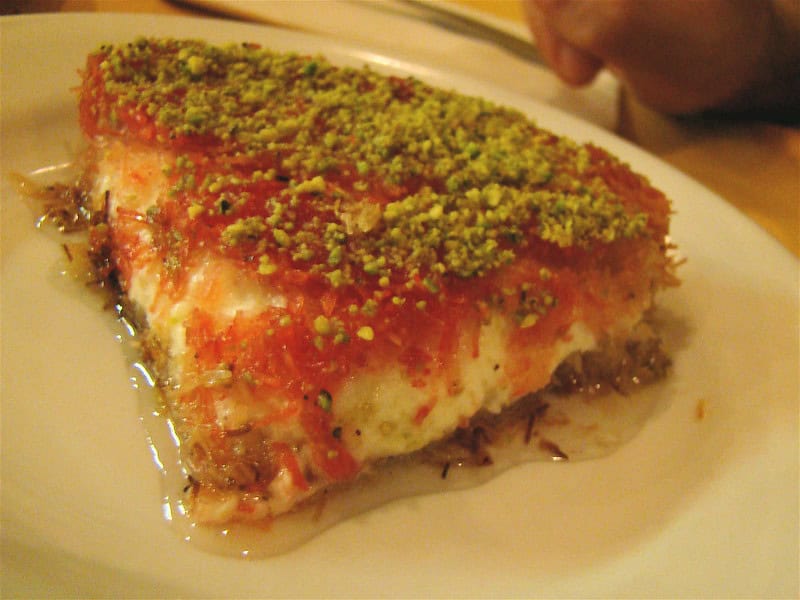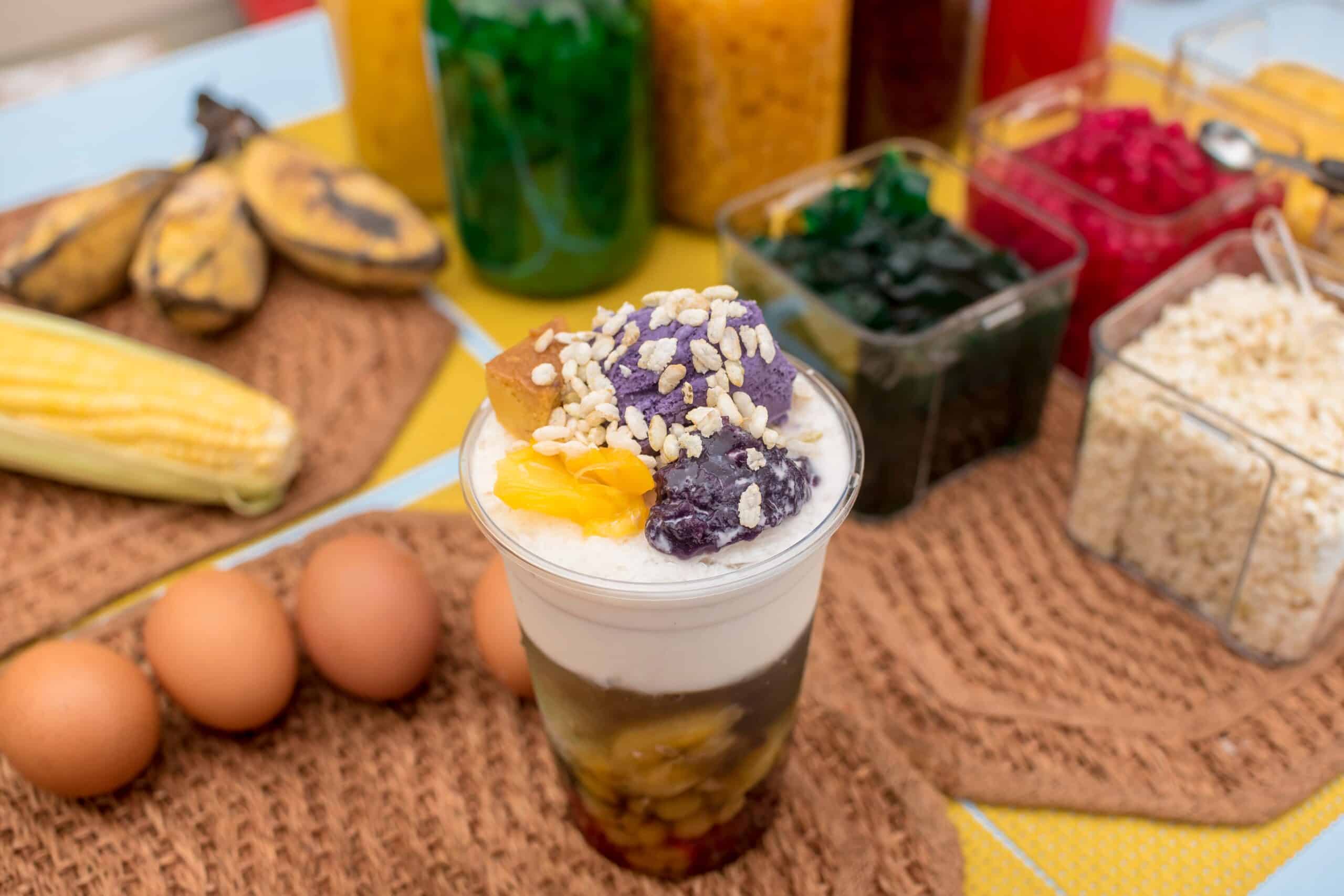Exploring desserts from around the world reveals a delightful array of flavors, textures, and culinary traditions. From the delicate Mochi of Japan to the rich Brigadeiro of Brazil, each dessert tells a story of its cultural origins and the unique ingredients that define it. These sweet treats not only satisfy our cravings but also offer a glimpse into the diverse ways people celebrate and enjoy food. Whether it’s a festival delicacy or a beloved everyday snack, these desserts showcase the creativity and passion that goes into making them. Let’s embark on a journey to discover 20 unique desserts from around the globe, each with its own distinctive charm and history.
Mochi (Japan)

Originating in Japan, Mochi is a traditional rice cake made from glutinous rice pounded into a paste and molded into shape. These chewy and delicate treats come in various flavors, often filled with sweet red bean paste, matcha, or ice cream. Mochi is particularly popular during Japanese New Year celebrations. Its smooth, stretchy texture and subtle sweetness make it a unique dessert experience. Each bite reveals a blend of simplicity and intricate craftsmanship.
Baklava (Turkey)

A staple of Turkish cuisine, Baklava is a rich, sweet pastry made of layers of filo dough filled with chopped nuts and sweetened with syrup or honey. The origins of this decadent dessert trace back to the Ottoman Empire. Each bite offers a delightful crunch followed by the aromatic, spiced nut filling. The syrup seeps through the layers, making every piece irresistibly sticky and sweet. Baklava is often enjoyed during special occasions and festive celebrations.
Pastel de Nata (Portugal)

Portugal’s famous custard tart, Pastel de Nata, boasts a flaky pastry crust filled with a creamy custard center. This delightful dessert was created by Catholic monks at the Jerónimos Monastery in Lisbon before the 18th century. The custard is infused with a hint of lemon and cinnamon, providing a warm, comforting flavor. Its golden, slightly caramelized top adds a touch of crunch to each bite. Often sprinkled with cinnamon or powdered sugar, it’s a beloved treat in Portugal and beyond.
Churros (Spain)

Churros, deep-fried dough pastries, are a beloved Spanish dessert often enjoyed with a cup of thick hot chocolate. These golden, crispy sticks are coated in a layer of sugar, sometimes with a hint of cinnamon. Originating in Spain, churros are now enjoyed worldwide, particularly in Latin America. The contrast between the crunchy exterior and the soft, airy interior makes them a delightful snack. They are typically enjoyed during breakfast or as a late-night treat.
Gulab Jamun (India)

Gulab Jamun is a classic Indian dessert consisting of deep-fried milk-solid balls soaked in a fragrant sugar syrup. The syrup is often flavored with cardamom, rose water, or saffron, adding a layer of aromatic complexity. These soft, melt-in-your-mouth sweets are usually served warm, making them a popular choice at festive occasions and celebrations. The rich, caramelized flavor and spongy texture create a delightful harmony. Originating from the Indian subcontinent, they have become a favorite across South Asia.
Pavlova (New Zealand/Australia)

Pavlova, named after the Russian ballerina Anna Pavlova, is a meringue-based dessert with a crisp crust and soft, light interior. Topped with whipped cream and fresh fruits like kiwi, strawberries, and passionfruit, it’s a visual and culinary delight. Both New Zealand and Australia claim its creation, reflecting its significance in both cultures. The combination of crunchy meringue and creamy topping makes for a textural feast. It’s a popular choice for summer gatherings and festive occasions.
Tiramisu (Italy)

Tiramisu, meaning “pick me up” in Italian, is a layered dessert featuring coffee-soaked ladyfingers, mascarpone cheese, cocoa, and sometimes a hint of liquor. This no-bake treat is as sophisticated as it is comforting. The creamy mascarpone contrasts beautifully with the bold flavor of coffee and the slight bitterness of cocoa powder. Originating from the Veneto region, it has become a symbol of Italian culinary artistry. Each spoonful offers a luxurious blend of flavors and textures.
S’mores (United States)

A quintessential American campfire treat, S’mores consist of roasted marshmallows and a layer of chocolate sandwiched between two graham crackers. This simple yet delicious dessert is synonymous with summer nights and outdoor adventures. The gooey marshmallow and melted chocolate create a delightful messiness that’s part of the fun. While traditionally made over a campfire, variations have adapted to indoor settings as well. Its nostalgic charm continues to delight both children and adults.
Dadar Gulung (Indonesia)

Dadar Gulung is a traditional Indonesian dessert consisting of green pandan-flavored pancakes filled with a mixture of grated coconut and palm sugar. The vibrant green color comes from pandan leaves, which also impart a unique, fragrant flavor. This sweet treat is popular during Ramadan and other festive occasions. The combination of the soft, slightly chewy pancake and the sweet, coconut filling creates a delightful balance. It’s a testament to Indonesia’s rich culinary heritage.
Mille-Feuille (France)

Mille-Feuille, also known as Napoleon, is a classic French pastry made up of layers of puff pastry and pastry cream. The top layer is usually glazed with icing or fondant and often decorated with chocolate lines. This elegant dessert is known for its light, flaky texture and rich, creamy filling. Each bite offers a symphony of crispiness and smoothness. Originating in France, it remains a staple in patisseries around the world.
Knafeh (Middle East)

Knafeh is a Middle Eastern dessert made from thin strands of shredded phyllo dough, layered with cheese, and soaked in sweet syrup. Often flavored with orange blossom or rose water, it’s a fragrant and indulgent treat. The cheese filling provides a savory contrast to the sweetness of the syrup, creating a unique flavor profile. Traditionally, it’s served warm, allowing the cheese to achieve a delightfully gooey consistency. Knafeh is especially popular during Ramadan and other celebrations.
Lamingtons (Australia)

Lamingtons are small squares of sponge cake coated in chocolate icing and rolled in desiccated coconut. These iconic Australian treats often have a layer of cream or jam in the middle, adding an extra dimension of flavor. The combination of the moist cake, rich chocolate, and crunchy coconut makes them a favorite for afternoon tea. Originating in Queensland, they are named after Lord Lamington, a former Governor of the region. Lamingtons are a beloved part of Australian culinary tradition.
Chè (Vietnam)

Chè is a Vietnamese dessert soup or pudding that comes in various forms, typically made with ingredients like beans, tapioca, fruit, and coconut milk. It’s a refreshing treat, often served chilled over ice, making it perfect for the hot tropical climate. The combination of textures and flavors in Chè is both unique and satisfying. Each region in Vietnam has its own variations, showcasing the diversity of Vietnamese cuisine. Chè is often enjoyed as a snack or dessert.
Brigadeiro (Brazil)

Brigadeiro is a beloved Brazilian confection made from condensed milk, cocoa powder, butter, and chocolate sprinkles. These bite-sized treats are a staple at Brazilian birthday parties and celebrations. The mixture is cooked until it thickens, then rolled into balls and coated in sprinkles. The result is a rich, fudgy texture that melts in your mouth. Simple yet irresistible, Brigadeiros are a testament to Brazil’s love for sweet treats.
Halo-Halo (Philippines)

Halo-Halo, which means “mix-mix” in Tagalog, is a popular Filipino dessert featuring a colorful mix of shaved ice, evaporated milk, and various ingredients such as sweet beans, coconut, fruit, and flan. Topped with a scoop of purple yam ice cream, it’s a visual and flavorful delight. This refreshing dessert is perfect for hot tropical days. The combination of textures and flavors makes every spoonful an adventure. Halo-Halo is a celebration of the Philippines’ diverse culinary influences.
Black Sesame Soup (China)

Black Sesame Soup is a traditional Chinese dessert made from ground black sesame seeds, rice, and water, resulting in a smooth, slightly sweet soup. This nutritious dessert is enjoyed for its rich, nutty flavor and health benefits. Often served warm, it’s a comforting treat, especially during colder months. The striking dark color and unique taste make it stand out among other desserts. Black Sesame Soup is a classic example of Chinese culinary tradition, balancing flavor and health.
Khanom Chan (Thailand)

Khanom Chan is a traditional Thai layered dessert made from coconut milk, rice flour, and pandan leaves. Each layer is steamed separately, creating a colorful, chewy treat with a delicate coconut flavor. This dessert is often prepared for special occasions and festivals. Its vibrant green and white layers make it visually appealing as well. Khanom Chan’s delightful texture and subtle sweetness are a testament to Thai culinary artistry.
Sütlaç (Turkey)

Sütlaç, or Turkish rice pudding, is a creamy dessert made from rice, milk, sugar, and flavored with vanilla or cinnamon. Baked in the oven to achieve a caramelized top, it’s a comforting and nostalgic treat. This traditional dessert is enjoyed throughout Turkey, often served chilled. The combination of the smooth, creamy texture and the slightly burnt top creates a delightful contrast. Sütlaç is a timeless favorite, loved by people of all ages.
Tavuk Göğsü (Turkey)

Tavuk Göğsü is a unique Turkish dessert made from chicken breast, milk, sugar, and rice flour, creating a delicate, pudding-like texture. Despite its unusual ingredient, the chicken breast is finely shredded and blended seamlessly into the dessert, providing a smooth consistency. Flavored with a hint of vanilla or cinnamon, it’s a surprisingly delicious treat. Often garnished with a sprinkle of cinnamon, it’s a dessert with a rich history, dating back to the Ottoman Empire. Tavuk Göğsü is a perfect example of how culinary creativity can transform unexpected ingredients into a delightful dessert.
Bánh Bò (Vietnam)

Bánh Bò, also known as Vietnamese honeycomb cake, is a sweet, chewy dessert made from rice flour, coconut milk, sugar, and yeast. The cake’s unique texture, resembling a honeycomb, is created by the fermentation process. It’s lightly sweetened and often tinted with pandan for a vibrant green hue. Steamed rather than baked, Bánh Bò offers a moist, spongy bite with a subtle coconut flavor. This traditional treat is enjoyed at festivals and family gatherings across Vietnam.
This article originally appeared on Rarest.org.
More From Rarest.Org
Mushrooms are fascinating organisms that come in an incredible variety of shapes, sizes, and flavors. From the common edible varieties that enhance our meals to the rare medicinal species that offer health benefits, mushrooms play a significant role in both culinary and medicinal fields. Read more.
Frogs and toads are remarkable creatures, known for their diverse appearances and unique adaptations. However, some species are so rare that they are seldom seen, making their survival a topic of significant concern. Read more.
Collecting video game memorabilia is a thrilling hobby that bridges the past and present of gaming culture. From limited edition cartridges to rare promotional items, these collectibles offer a glimpse into the history and evolution of video games. Read more.



